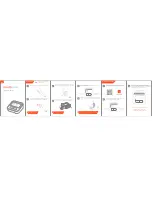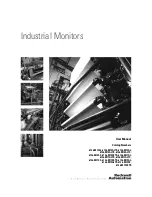
— 24 —
by the
Mod Response:
buttons on the Webpages and LCD-
touchscreen
Setup/Radio
screens. The default selection is the
fastest,
50µs
setting, but more ‘forgiving’ selections of
100µs
,
200µs
,
500µs
and
1ms
are also available. We recommend the
more conservative default value, but it’s your call.
You should typically see negligible difference between positive
and negative deviation readings, reflecting only the asymmetry
normally encountered in speech and music waveforms. Con-
sistent discrepancies indicate a possible FM exciter issue.
These total-mod readings should not be affected by accompa-
nying HD Radio “IBOC” (In-Band On-Channel) programs. Great
care has been taken in the design of very selective IF filtering to
eliminate false indications of FM-overmod at any HD carrier-
pair injection ratio. Any observed interaction between analog
and digital program channels should certainly prompt further
investigation.
Pilot &
Subcarriers
This next section of the display screen first shows the injection
level of the 19kHz stereo pilot. On an FM station broadcasting
in stereo,
Pilot
should be a rock-steady reading at about 9.0%.
Composite clipping or other nonlinearity in the transmission
path can cause this reading to ‘bounce’ to a lesser or greater ex-
tent, these level perturbations showing up on the accompany-
ing
AM
bargraph as amplitude modulation of the stereo pilot.
Early FM stereo exciters generated the FM baseband signal us-
ing analog multipliers, necessitating an adjustment procedure
for nulling the 38kHz carrier component. Today’s stereo-gens
don’t need this, yet the 551 gives a readout of 38kHz energy.
You shouldn’t see much action on the
38k
bar, yet music heavy
in sub-bass may cause this readout to flicker-on occasionally. A
steady-state reading or a great deal of bass-associated activity
hints at a stereo-gen problem.
The
RDS
readout gives the injection level of the RadioData sub-
carrier at 57kHz. Similar to the stereo pilot, this should be a
solid reading at about 5%. Program audio should not modulate
the amplitude of this reading at all. Variations in
RDS
level
again suggest transmission path nonlinearity or a problem with
the RDS encoder.
Summary of Contents for Dante 551
Page 1: ...551 Modulation Monitor Installation User Guide www inovonicsbroadcast com ...
Page 2: ......
Page 62: ... 58 ...
Page 64: ......
















































